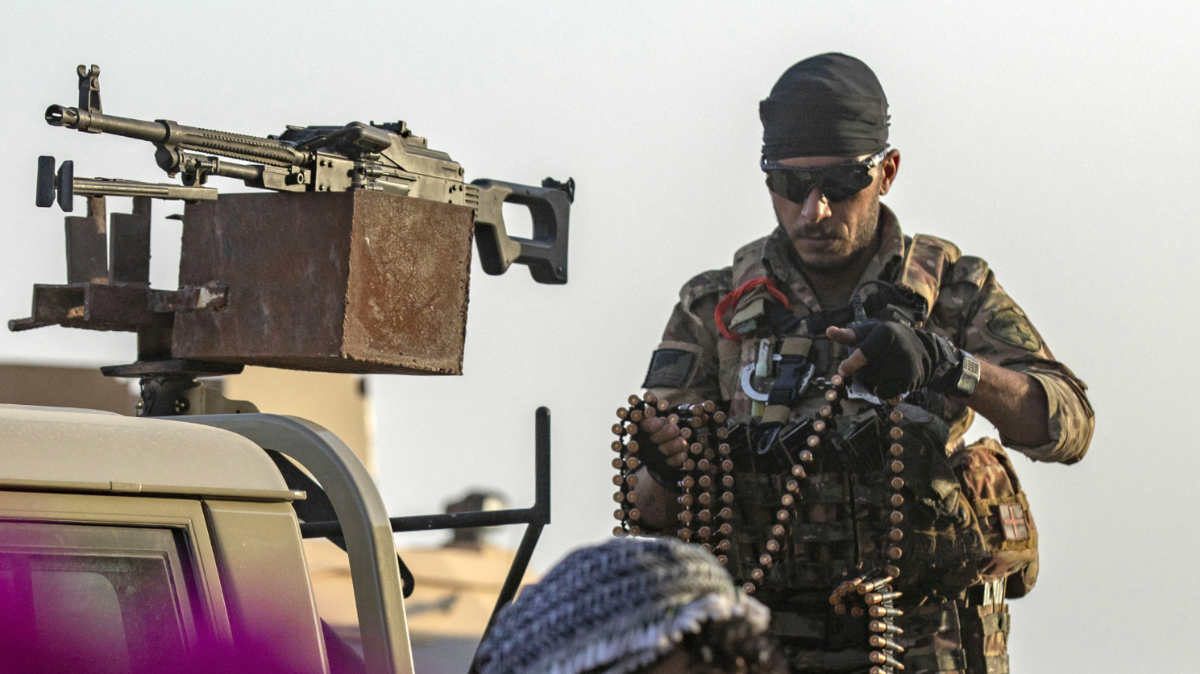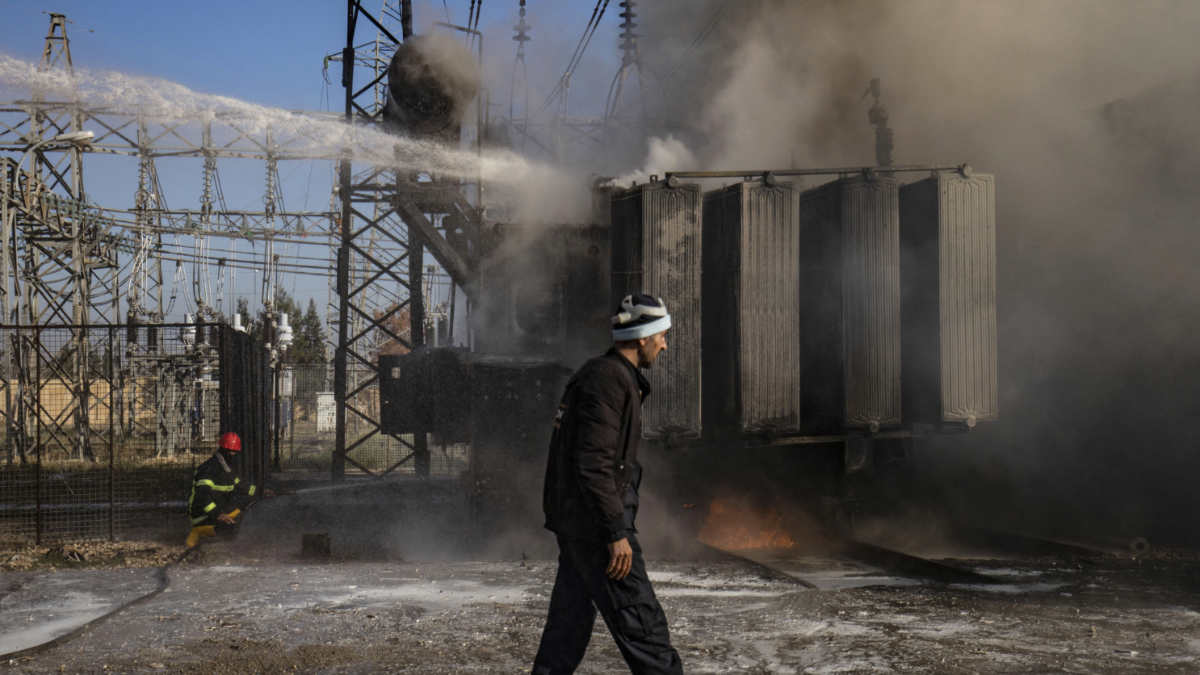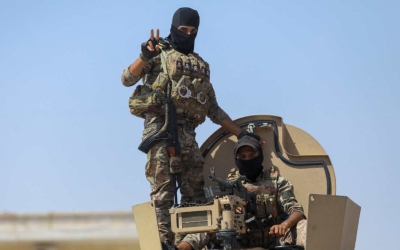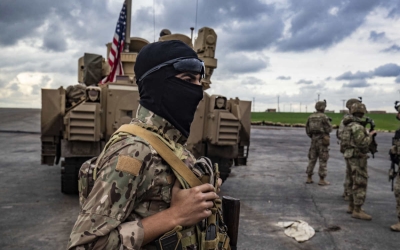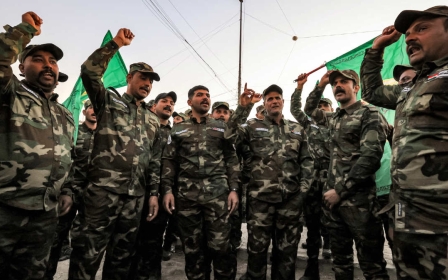Kurdish groups gripped by fear as they brace for a US pullout from northeast Syria
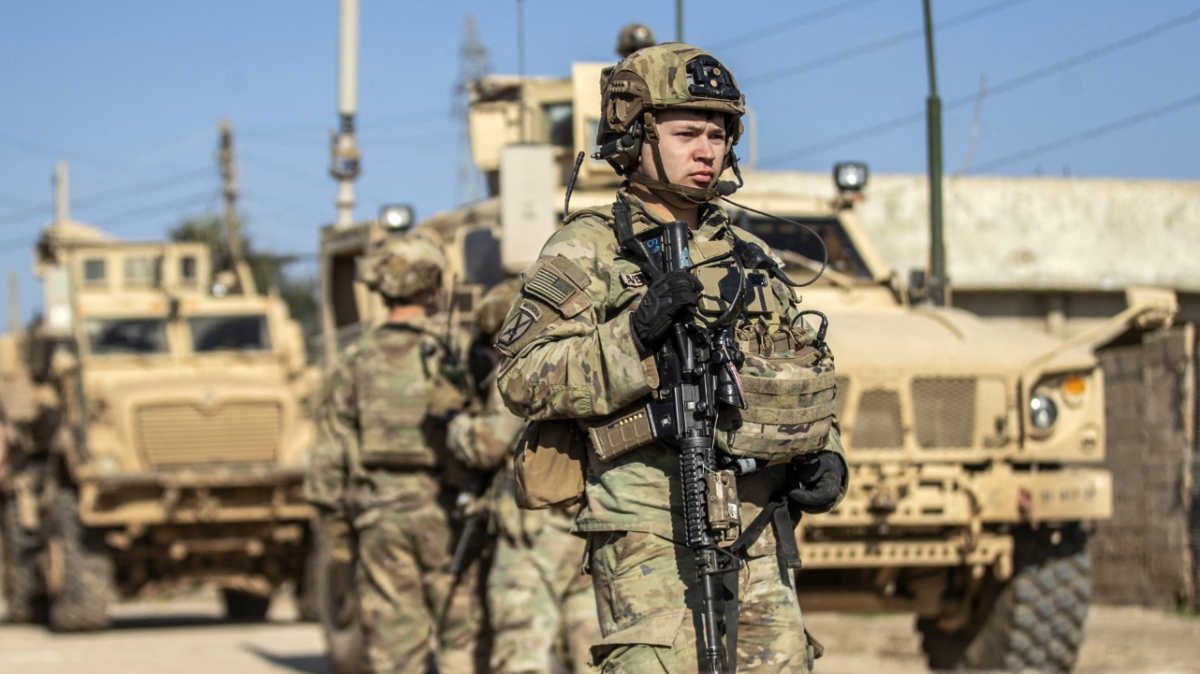
Battered by Turkish air strikes and stalked by fears of a US military withdrawal, Washington's Kurdish-led allies in northeast Syria are increasingly concerned they will be ditched as "collateral damage" of the war in Gaza.
A rare visit last week to northeast Syria by General Erik Kurilla, the top US military commander in the Middle East, did little to boost confidence in the Kurdish-led autonomous region, officials there told MEE; neither has an extended reduction in attacks by Iran-backed groups on US targets in the region.
Chief among the worries of officials in northeast Syria has been a surge in attacks by Turkey since 7 October, when the Israel-Palestine war erupted.
Ankara has upped its bombardment of civilian infrastructure in northeast Syria, including power stations, the region’s electric grid, medical facilities, and oil fields - which Human Rights Watch said last month have left millions powerless and without access to clean drinking water.
“The whole region is on fire and nobody will respond to Turkey’s aggression against us when everyone is busy with Gaza. We have asked the US to rein in Turkey, but they have brushed us off,” Mahmoud Meslat, co-chair of the Syrian Democratic Council (SDC), the political wing of the Kurdish-led Syrian Democratic Forces (SDF), told MEE.
New MEE newsletter: Jerusalem Dispatch
Sign up to get the latest insights and analysis on Israel-Palestine, alongside Turkey Unpacked and other MEE newsletters
The Turkish strikes come amid fears that the war in Gaza is accelerating what Janda Muhammad, another senior SDC official, described to MEE as a potential “Afghanistan-like pullout” of roughly 900 US troops from northeast Syria, which she said would have “chaotic results” for the region.
The gloom among officials in the northeast has been exacerbated by Washington’s approval of the sale of F-16 fighter jets to Turkey.
'Sitting ducks'
“The Americans told us Turkey would not use the jets against their allies [the SDF],” Meslat, told MEE. “But we think Turkey will do what it wants.”
The US’s support for the Kurdish-led Syrian Democratic Forces has long been a point of contention with its Nato ally, Turkey.
Ankara views the SDF as an extension of the outlawed Kurdistan Workers’ Party (PKK), which has waged a decades-long war for independence against Turkey and is also considered a terrorist organisation by the US and the European Union. But Washington has refused to cut ties with the SDF, its main partner in their fight against the Islamic State (IS) militant group.
More recently, Turkey and the US have been enjoying a thaw in ties which has unnerved the SDF. In January, Ankara approved Sweden’s ascension to Nato, which officially became a member on 7 March, and Erdogan has patched up ties with Greece, steps that helped the Biden administration move forward with the F-16 sale.
Turkey’s concerns about the PKK led it to launch an invasion of Syria in 2016, with the aim of depriving Kurdish fighters a base along its border. Two more military forays followed in 2018 and 2019, giving Turkey and its Arab proxy militias control over large swaths of Syrian territory.
Experts say the deteriorating security conditions in northeast Syria reflect how Ankara is taking the opportunity of better ties with Washington to push its objective of degrading the SDF.
'Northeast Syria is collateral damage of Gaza. I wouldn’t have too much hope about its future'
- Fabrice Balanche, Syria specialist
Dareen Khalifa, an expert on Syria and senior advisor at the International Crisis Group, told MEE that since the war in Gaza erupted, Turkey has pursued a new strategy in its bombing campaign.
“The Turks are taking advantage of the situation in Gaza, of course,” Khalifa said. “Specifically they are degrading the Kurdish-led administration’s ability to extract and refine oil, in a huge blow to their financial resources."
Northeast Syria is home to 95 percent of Syria’s oil and gas reserves. In a press conference last month, Mazloum Abdi, commander of the SDF, said Turkey’s strikes on commercial sites and infrastructure had cost the cash-strapped SDF 50 percent of its budget.
Abdi himself is hunkered down with US soldiers at al-Shaddadah military base to avoid assassination by Turkey’s drones.
“Basically, Kurdish fighters have become sitting ducks to Turkey’s strikes,” Aron Lund, a fellow at Century International, told MEE.
US-SDF rift
Lund said that Turkey’s emphasis on hitting energy infrastructure since October had made “life miserable for local civilians…and adds to stress between the US and SDF”.
Last week, Centcom Commander Erik Kurilla stopped in the northeast as part of a regional tour. He visited al-Roj and al-Hol refugee camps, which are home to 45,000 people - including the families of IS militants. Kurdish forces also guard over 9,000 IS members.
But Kurilla’s visit did little to dispel the SDF’s sense of gloom and the feeling of powerlessness to persuade the US to lobby Turkey against more strikes, regional officials told MEE.
His visit coincided with a Turkish drone strike that killed at least three members of a local Christian police force. The SDF is Kurdish-led but also counts Syriac Christians, Armenians and Arab forces among its ranks.
The US Defence Department warned in a February report that Turkey’s strikes were succeeding in driving a wedge between US troops operating in the northeast and their SDF allies, “this tension between the US and SDF forces could result in threatening the safety of US personnel”.
Turkish Foreign Minister Hakan Fidan is due to travel to the US on Thursday to meet US Secretary of State Antony Blinken and national security advisor Jake Sullivan. But Syria will likely be a sideline topic, with the Biden administration’s energy focused on pushing Hamas and Israel into a six-week truce, analysts tell MEE.
Iran knocking on the door
Fighting in Gaza has slowly seeped out beyond the besieged Mediterranean enclave's borders, morphing into a shadowy proxy contest between the US and Iran over who calls the shots in the Middle East.
Dealing with the number of hot spots in the region has become a game of whac-a-mole for the Biden administration.
In Yemen, the US is launching air strikes against Iran-backed Houthi rebels who are waging war against commercial shipping, in what they say is solidarity with Palestine. Meanwhile, the US is conducting shuttle diplomacy between Israel and Lebanon to prevent the outbreak of war with Hezbollah.
'Iran understands that events are slowly but surely going in its direction. They aren’t in a rush'
- Robert Ford, former US ambassador Syria
Syria is also a battleground between the US and Iran’s so-called "axis of resistance". In February, seven SDF fighters were killed in an attack on al-Omar oil field, the largest US-led coalition base in Syria.
Syria's decade-long civil war ended with President Bashar al-Assad controlling about two-thirds of Syrian territory. The semi-autonomous region of northeast Syria, also referred to by Kurds as Rojava, occupies the other roughly one-third. Driving the US out of the northeast has long been a goal of Assad and his Russian and Iranian backers.
Since 7 October, Iranian proxies have launched more than 170 attacks on US forces, mainly in Iraq and Syria, according to the Institute For the Study of War. The deadliest strike that killed three US soldiers, however, caught US troops off guard at a little-known base in Jordan that supports the US’s mission in Syria.
The Biden administration responded with dozens of strikes against Iranian assets, including one that killed a senior Iranian-backed militia commander in Baghdad with a hellfire missile fitted with switchblades, called the flying Ginsu. Since then, attacks by Iran and its proxies have all but stopped.
Robert Ford, a former US ambassador to Syria, told MEE that the slowdown in strikes didn’t signal Iran is giving up on its goal of expelling the US from the region, rather, the opposite.
“The Iranians are stomping hard for America to leave,” he told MEE. “They understand that events are slowly but surely going in their direction. They aren’t in a rush.”
'Arm the shit out of the Kurds'
The slowing of attacks may actually make it more palatable for the Biden administration to agree to a drawdown of the US-led counter-IS mission in Iraq, which is a key goal of Tehran and its Iraqi proxies.
Because Iraq is the logistical hub for US forces in Syria, a pullout there could make the US presence in Syria untenable, former senior US officials previously told MEE.
One contingency plan being floated by Department of Defence officials would leave US troops in Iraq’s semi-autonomous Kurdish region, a US defence official told MEE, preserving the US's access to Erbil airport.
“Basically we would pull out, arm the shit out of the Iraqi Kurds and still support our guys in northeast Syria,” the official told MEE on condition of anonymity.
Kurds in Iraq's northern region have called on the Biden administration to supply it with air defence systems, but Washington has been reluctant to do so, with the demand for advanced systems from Ukraine being a contributing factor.
While that plan resonates in some quarters of Washington, it may not be practical. The US has cut the salaries of the semi-autonomous region's Peshmerga forces, and Erbil is increasingly cash-strapped because of a feud with Baghdad over oil revenue.
"Iraqi Kurdistan is also extremely weak right now," Ford said. "They need Baghdad's approval to pay civil servants' salaries."
'Violent free-for-all'
US troops arrived in northeast Syria in 2015 as part of Operation Inherent Resolve. The SDF was their main partner in pushing back IS after it swept through vast swathes of Syria and neighbouring Iraq.
The so-called "caliphate" was territorially defeated in 2019, but roughly 900 US troops remain in the area.
Officially, their mission is to conduct raids against IS sleeper cells. But they have become a chip in the region's geopolitical chessboard, with some US officials viewing them as leverage to deprive Assad's Russian and Iran allies of a valuable chunk of Syrian territory.
Some US officials, like Brett McGurk, Biden’s top White House Middle East advisor, hope Washington can seal a deal for broad US withdrawal from the northeast, following an agreement between the SDF and the Syrian government.
Reports in February that the Pentagon was reviewing those long-standing plans sparked panic among supporters of a continued US troop presence. The debate in Washington between those in favour of remaining and a withdrawal has played out since the Trump administration made an abrupt exit in 2019, which was partially reversed.
“If the US were to pull out, it would be a violent free-for-all. The Turks will advance, the Syrian regime will advance, the Iranians will advance and IS attacks will surge,” Khalifa told MEE.
But Ford, a longtime critic of what he dubbed America’s “forgotten forever war”, said the US has two choices.
"They either stay in Syria indefinitely or they figure out a transition where the SDF goes to the Assad government,” adding that the pullout would likely cement Russia’s role as Syria’s powerbroker.
Besides facing a Turkish assault and economic crisis, the autonomous region is grappling with sectarian tensions.
In August last year, Arab tribes, some with links to the Assad government, revolted against the SDF in Deir Ezzor province. As the war in Gaza drags on, Iran has sought to exploit those tensions. Iranian Revolutionary Guard’s Commander Hajj Mahdi is in charge of Tehran’s operations in Deir Ezzor and has been actively recruiting the tribes.
Fabrice Balanche, a Syria specialist at the University of Lyon II, said Arab tribal leaders and the SDF would have no choice but to cut a deal with Damascus if the US pulls out.
“There is a sense of 'when, not if, the US leaves.' I don’t see how the SDF can survive another year, maybe two," Balanche said.
"Northeast Syria is collateral damage of Gaza. I wouldn’t have too much hope about its future."
Middle East Eye delivers independent and unrivalled coverage and analysis of the Middle East, North Africa and beyond. To learn more about republishing this content and the associated fees, please fill out this form. More about MEE can be found here.


